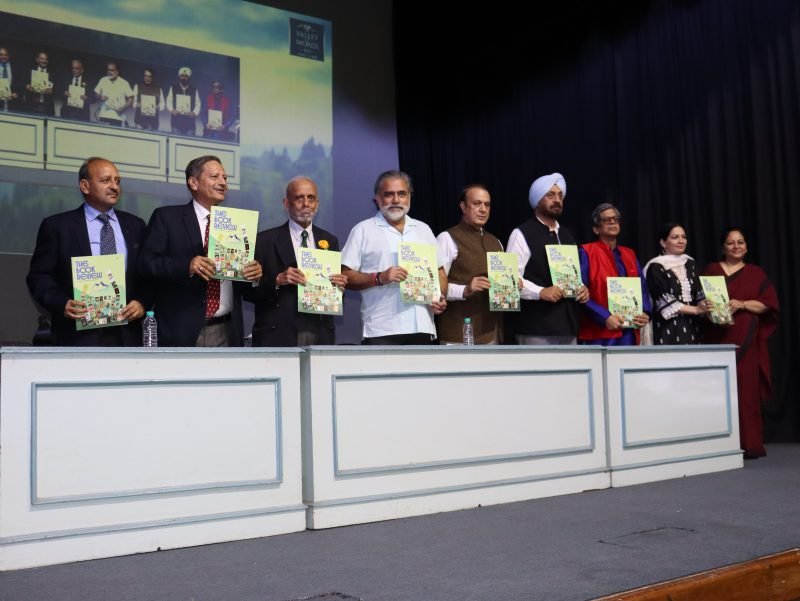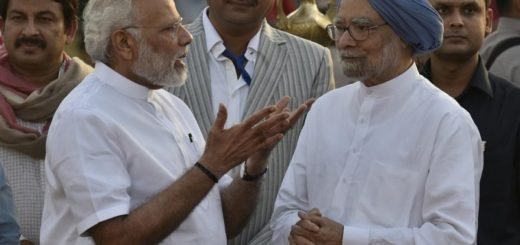Perception: 1971 — The war which shaped the subcontinent [Event]

This year marks the 50th anniversary of the war between India and Bangladesh. A delightful and informative two-day event on military history and strategy, focusing on the 1971 war, was conducted at United Service Institution of India (USI), a national security and defence services think tank based in New Delhi, India on October 9th and 10th, 2021. The festival was a part of several literature and arts festivals that Valley of Words (VoW), a literary organization based in Dehradun, conducts annually. This episode on military history and strategy was first among many theme-centric festivals that VoW is going to pull off in the coming weeks. It brought together army veterans of India and Bangladesh, diplomats and authors to the table, to provide a hindsight view of the 1971 war.
Here are the excerpts from the session titled “Perceptions”
1. Western Pakistan’s Designs on East Pakistan: Campaign, Objectives and Strategy
The session was moderated by Lt Gen PJS Pannu, inviting Ambassador Pinak Chakraborty, High Commissioner to Dhaka 2007-09, former Deputy High Commissioner to Dhaka 1999-2002. The session commenced with critical questioning of the ulterior motives of the creators and patrons of Partition 1947, trisecting the country with two factions of Pakistan on either side. The acumen, prudence and judgement behind governing two culturally different wings under single religious monogamy became a geographical requirement of the Colonial empire of the British for slicing the region.
Ambassador Chakraborty gave an overview of the notably well-documented report presented in the archives of the Imperial British during the Partition of 1947, vocalizing the two units of Pakistan, underlining the prospect of its easternmost section to merge with the Union of India. The leaders of Bengal, including the pioneers of the Muslim League were against the division of Bengal owing to its strong cultural ties and religious harmony. They had put forward a proposal to Pt. Nehru, asking for the possible merger. To this the former Prime Minister said “I don’t mind while it stays within the territory of India”. Jinnah, on the other hand, was not very happy with the enclave provided to him to govern. His obsession with Calcutta being constituted under the Pakistani dominion went downhill with mainly the Hindu leaders rebuffing his game plan. The 1872 census painted a paradoxical picture with the Muslim majority population residing in the east of Bengal.
The quasi-democracy struggled with the internal political problems morphed into other issues with leaders like Yaya Khan advocating for Sheikh Mujibur Rehman’s leadership on one hand and Zulfikar Ali determined not to bestow him with that position of honour. Christian Fair argued that the design of rupturing India was not in the higher calling of the Imperial government as they had ploughed their resources to strengthen and defend the frontiers from the incoming attacks from the Soviet Union through Afghanistan. The primary reason for partition can adhere to the withdrawal of Congress leaders when the British launched an attack on Germany on behalf of India, which led to the imprisonment of Congress leaders with the Muslim leaders taking the centre stage to put forward their petitions and proposals. She put forward a strong argument stating that Pakistan may have lost that particular battle, however, it did win the war in the long run as it does not have to bother about trivial matters and is a successful rent seeker from International communities and global forums.
Watch the full video on YouTube:
Perceptions: Western Pakistan’s Designs on East Pakistan: Campaign, Objectives and Strategy
2. India’s compulsions and outlook on East Pakistan, Objectives and strategy
The session invited Shri Iqbal Malhotra in conversation with highly decorated military leaders namely PVSM, UYSM, AVSM, VSM Lt Gen Nirbhay Sharma, former Governor to the states of Mizoram and Arunachal Pradesh and AVSM, SM Maj Gen Ian Cardozo who had profound knowledge on the workings of Pakistan in its Eastern faction.
Shri Iqbal Malhotra highlighted how the 1971 Bangladesh war not only holds remarkable dominance in the chapters of Human Rights Violation but also the emergence of military hard power into foreplay shaking off the ideals of non-violence and NAM, thereby strongly establishing itself as one of the superior amongst the armed race. Grabbing the centre of attention amidst world politics, the former prime minister Mrs Indira Gandhi showing compassion, opened India’s doors to welcome ten million refugees from East Pakistan, providing them with a safe space to address as a home, after the staggering aftermath of heinous and abominable past.
Maj Gen Ian Cardozo addressed the compulsion for India to engage in the diplomatic, political and social aspects of the war was a major operational move taken by Mrs Gandhi. Pakistan had carried out an institutional procedure of routine human rights violations, butchering 1 million people, raping lakhs of women and girls, driving off 1o million stateless people to find a sanctuary under the Indian skies within the nearby states of West Bengal, Tripura, Assam and Odisha. Listening to the dreadful stories of pain and agony, measuring the national interests at par, the former prime minister decided to strike the hammer and break Pakistan’s neck by the armed intrusion.
Lt Gen Nirbhay Sharma shed light on how the cold war at its peak shaped the contours of the 1971 war. While Mrs Gandhi pleading at the international forum failed to grab the attention of the Americans, the Soviet Union stood by India as a good old friend, aiding in all forms of assistance both militarily and as a supporter backing India at the UN. While the two global powers were confronting each other, India managed to emerge victorious with the Mukti Bahini and the local natives favouring the Indian advancement of troops. However, it is important to take into consideration the difference in military operational strategy between the Eastern Command at Calcutta and the Indian army Headquarters at Delhi.
Watch the full video on Youtube: Perceptions: India’s Compulsions and Outlook on East Pakistan: Objectives and Strategy


















